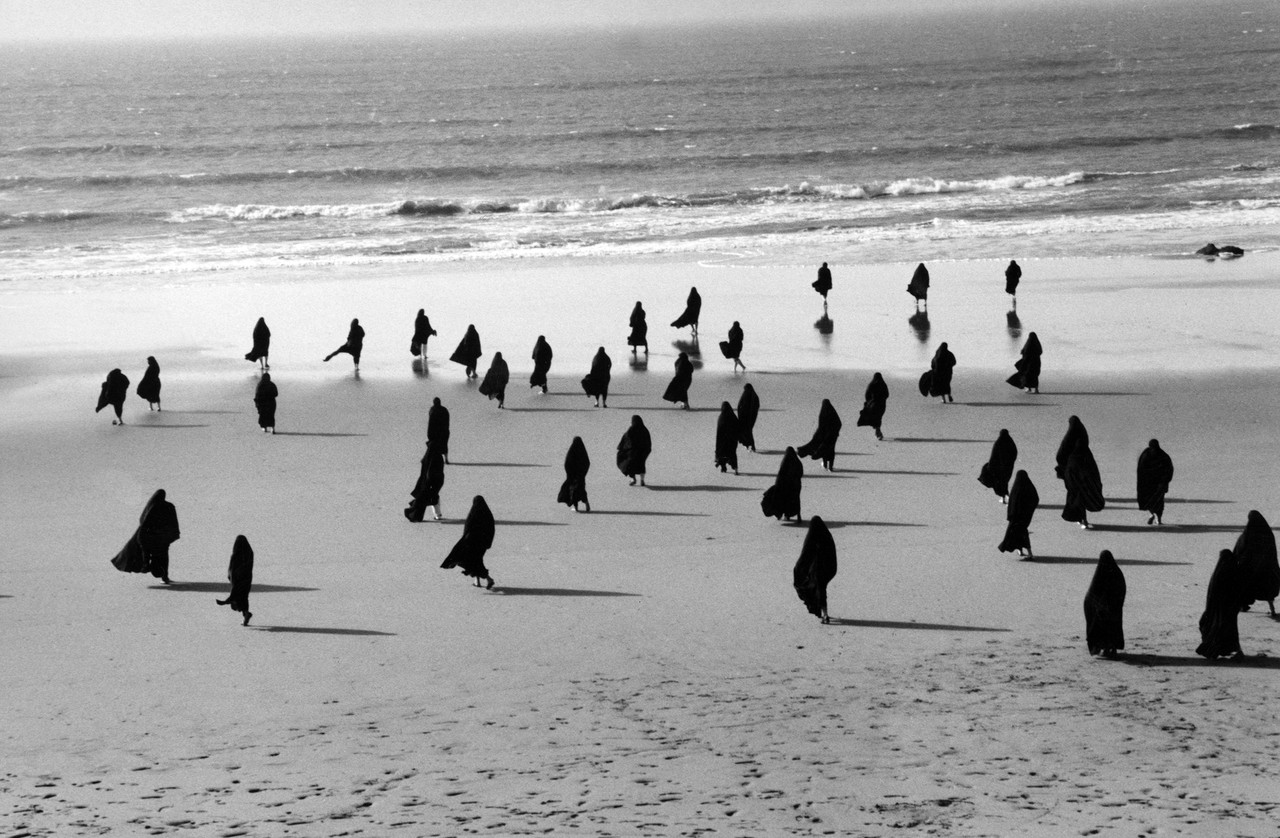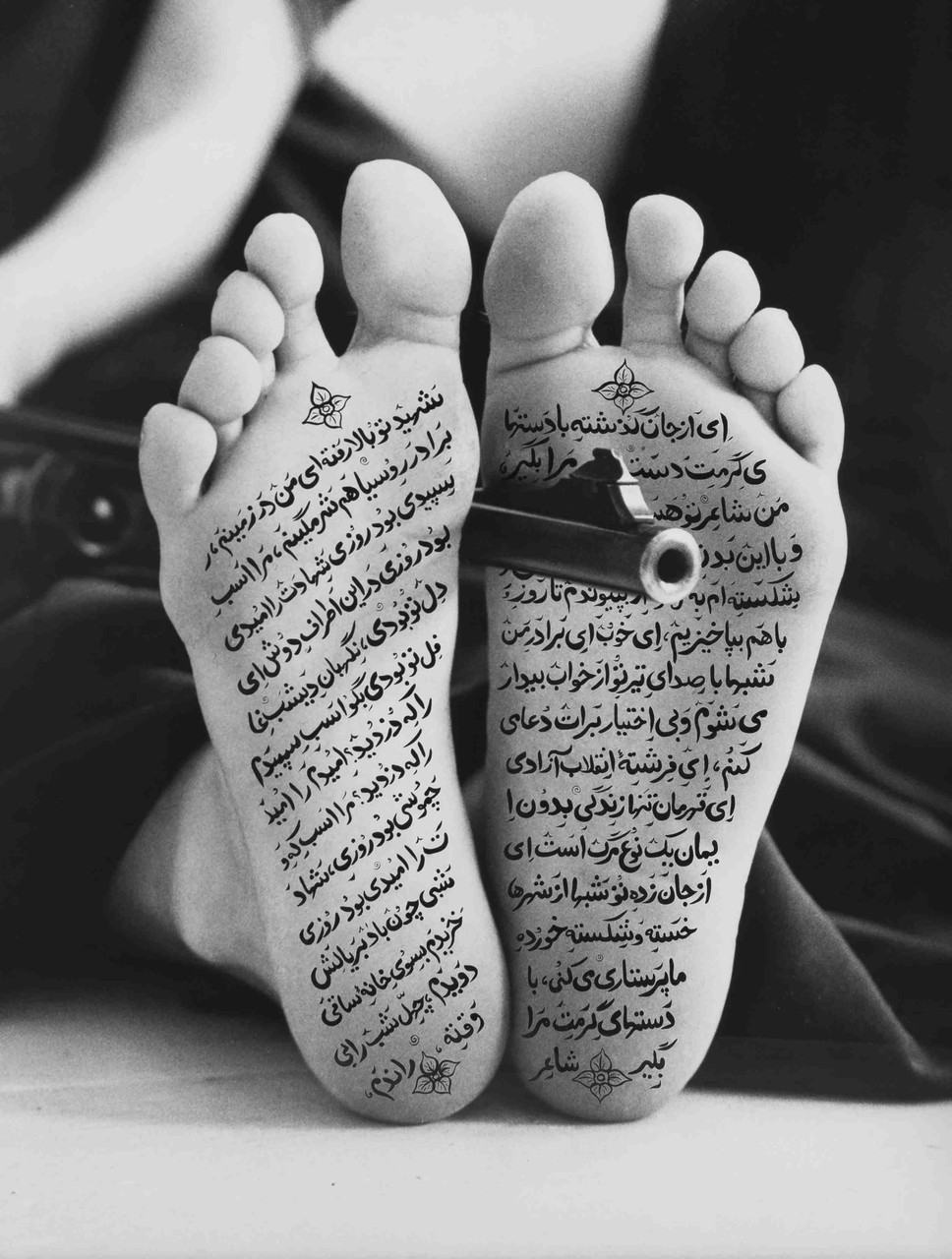Shirin Neshat
01 Jul - 29 Oct 2017

Shirin Neshat, Sarah, 2016, Video still
© Shirin Neshat, Courtesy Gladstone Gallery, New York und Brüssel
© Shirin Neshat, Courtesy Gladstone Gallery, New York und Brüssel

Shirin Neshat, Rapture, 1999, Video still
© Shirin Neshat, Courtesy Gladstone Gallery, New York und Brüssel
© Shirin Neshat, Courtesy Gladstone Gallery, New York und Brüssel

Shirin Neshat, Allegiance with Wakefulness, 1994, Tinte auf S/W Druck auf RC-Papier (Foto: Cynthia Preston), 118.7 x 94.3 cm
© Shirin Neshat, Courtesy Gladstone Gallery, New York und Brüssel
© Shirin Neshat, Courtesy Gladstone Gallery, New York und Brüssel
The Kunsthalle Tübingen is devoting a major retrospective to the internationally renowned Iranian artist Shirin Neshat. Besides important works from her various creative phases, the show also presents others being shown in Europe for the first time.
The Iranian artist, photographer, and filmmaker Shirin Neshat (*1957) is best known for her examinations of the situation of women in the Muslim world. She grew up in an affluent, Western-oriented home and attended a Catholic boarding school in Teheran. When Ayatollah Khomeini came into power in 1979 following the Iranian Revolution, she went to the United States to study fine and performing art. In 1990, one year after Khomeini’s death, she returned to Iran for the first time, which had completely changed in the wake of the revolution. She responded to this transformation with Women of Allah (1993–97), a series of black-and-white photographs that brought her international fame and which at the same time marks her first important creative phase as a professional artist. The photographs feature portraits of armed Islamic women; those parts of their bodies that are uncovered, for instance their faces or hands, have been overwritten with texts by contemporary female Iranian lyricists in the national language of Farsi.
In 1998 Neshat turned to the medium of video installation: her film trilogy Turbulent (1998), Rapture (1999), and Fervor (2000) won the International Prize at the 48th Biennale di Venezia. Whereas the artist had previously dealt primarily with Islamic society, she now increasingly devoted herself to questioning Western moral values, for example in collaboration with the vocal and performance artist Sussan Deyhim, who combines Oriental with Occidental styles in her music. The video installations Mahdokht (2004), Zarin (2005), Faezeh (2008), Munis, and Farokh Legha (2009) represent a third work phase. They are both independent videos as well as episodes from the feature-length movie Women without Women, for which the artist received the Silver Lion for Best Direction at the 66th Venice International Film Festival. In 2013 Shirin Neshat was appointed to serve as a member of the jury of the 63rd Berlin International Film Festival, and in 2017 she will be presenting a multimedia opera performance within the scope of the Salzburg Festival.
The large-scale survey exhibition at the Kunsthalle Tübingen assembles important works from all of Shirin Neshat’s creative phases—from the famous, iconic, overwritten photographs and the single- and multichannel installations to monumental ensembles of works such as The Book of Kings.
The path through the exhibition, a balance between photographs and moving images with sound, will extend throughout the entire Kunsthalle and also present recent works that have never before been seen in Europe. The exhibition, substantially funded by the German Federal Cultural Institution, will be accompanied by a catalogue as well as a wide range of events organized in cooperation with numerous partners.
The Iranian artist, photographer, and filmmaker Shirin Neshat (*1957) is best known for her examinations of the situation of women in the Muslim world. She grew up in an affluent, Western-oriented home and attended a Catholic boarding school in Teheran. When Ayatollah Khomeini came into power in 1979 following the Iranian Revolution, she went to the United States to study fine and performing art. In 1990, one year after Khomeini’s death, she returned to Iran for the first time, which had completely changed in the wake of the revolution. She responded to this transformation with Women of Allah (1993–97), a series of black-and-white photographs that brought her international fame and which at the same time marks her first important creative phase as a professional artist. The photographs feature portraits of armed Islamic women; those parts of their bodies that are uncovered, for instance their faces or hands, have been overwritten with texts by contemporary female Iranian lyricists in the national language of Farsi.
In 1998 Neshat turned to the medium of video installation: her film trilogy Turbulent (1998), Rapture (1999), and Fervor (2000) won the International Prize at the 48th Biennale di Venezia. Whereas the artist had previously dealt primarily with Islamic society, she now increasingly devoted herself to questioning Western moral values, for example in collaboration with the vocal and performance artist Sussan Deyhim, who combines Oriental with Occidental styles in her music. The video installations Mahdokht (2004), Zarin (2005), Faezeh (2008), Munis, and Farokh Legha (2009) represent a third work phase. They are both independent videos as well as episodes from the feature-length movie Women without Women, for which the artist received the Silver Lion for Best Direction at the 66th Venice International Film Festival. In 2013 Shirin Neshat was appointed to serve as a member of the jury of the 63rd Berlin International Film Festival, and in 2017 she will be presenting a multimedia opera performance within the scope of the Salzburg Festival.
The large-scale survey exhibition at the Kunsthalle Tübingen assembles important works from all of Shirin Neshat’s creative phases—from the famous, iconic, overwritten photographs and the single- and multichannel installations to monumental ensembles of works such as The Book of Kings.
The path through the exhibition, a balance between photographs and moving images with sound, will extend throughout the entire Kunsthalle and also present recent works that have never before been seen in Europe. The exhibition, substantially funded by the German Federal Cultural Institution, will be accompanied by a catalogue as well as a wide range of events organized in cooperation with numerous partners.
